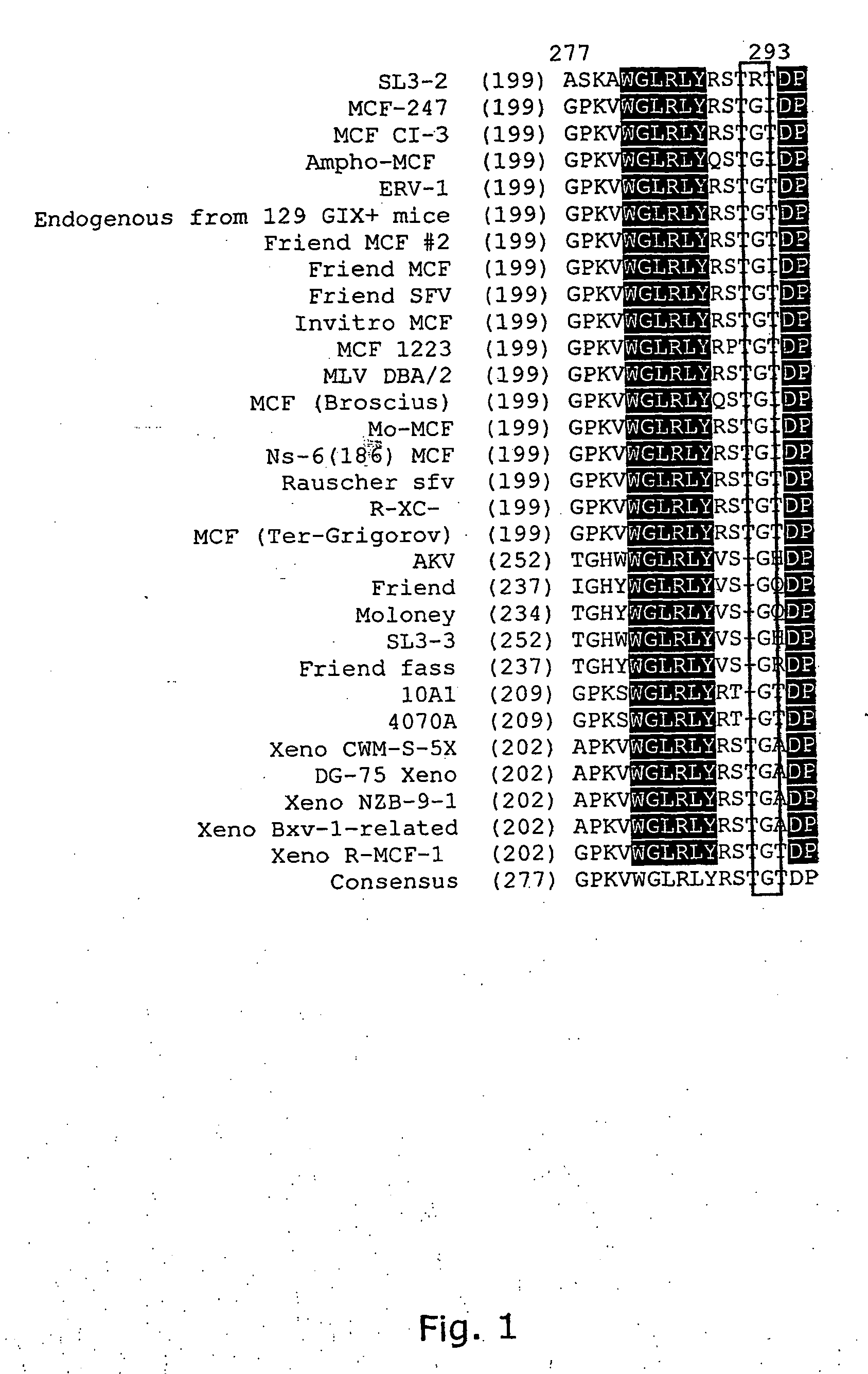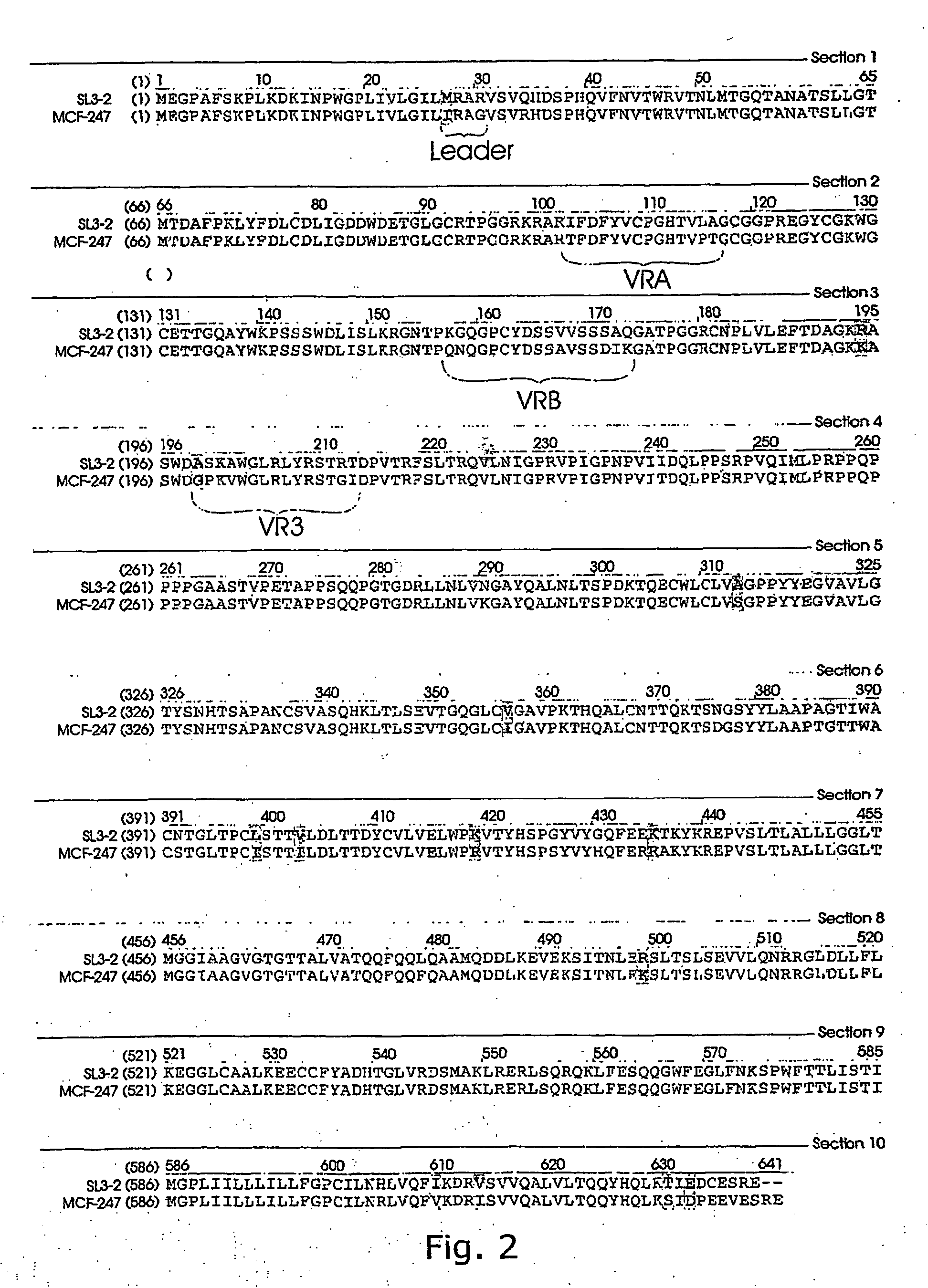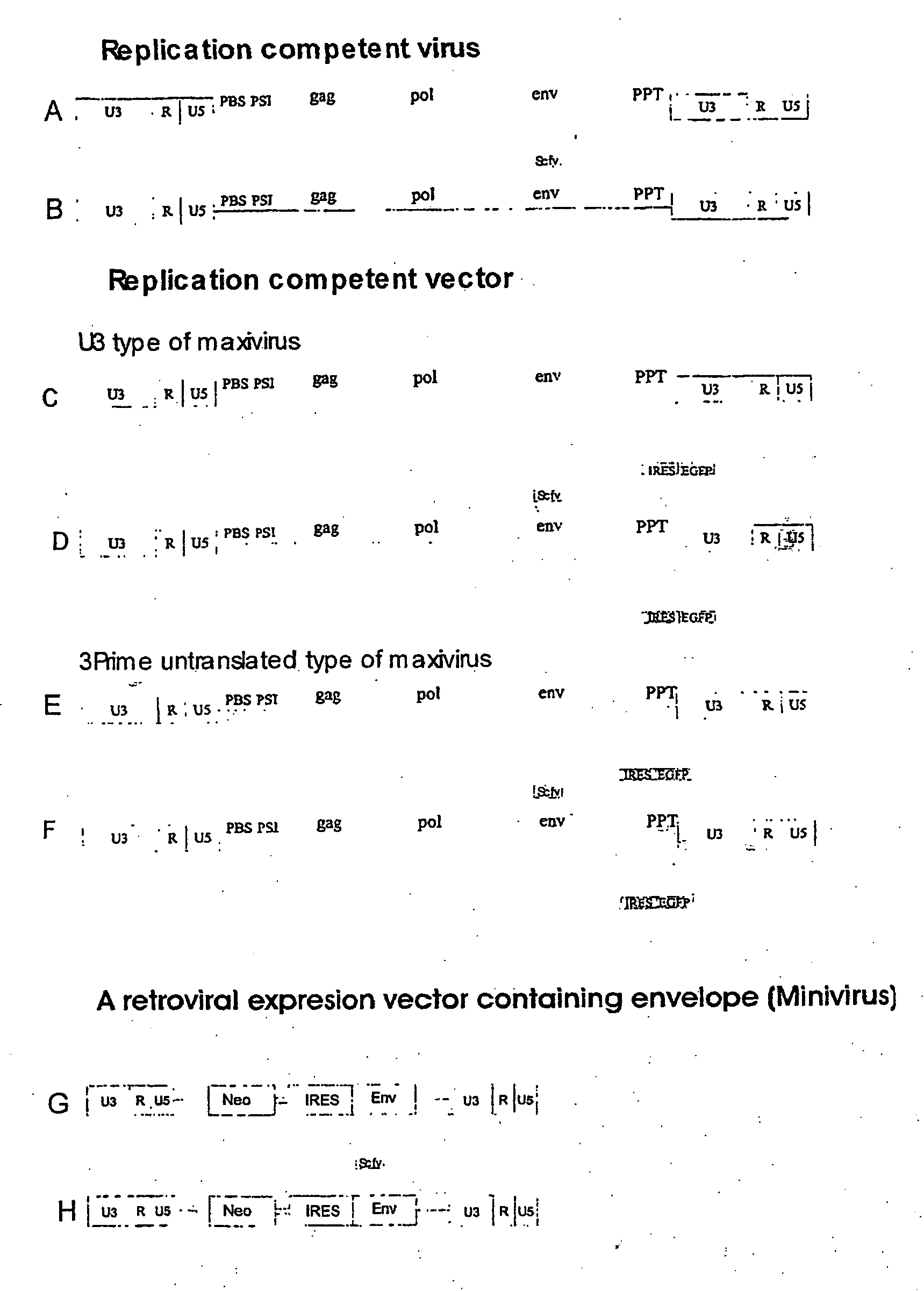Purified polypeptide, isolated nucleic acids encoding said polypeptide, vectors and use thereof
a polypeptide and polypeptide technology, applied in the field of purified polypeptides, can solve the problems of not having the polytropic species host range, increasing the number of integration events of viruses with different receptor usage, and vector systems utilising wild type envelopes of simple retroviruses cannot be used to introduce genes in a selective manner into specific cells/tissues
- Summary
- Abstract
- Description
- Claims
- Application Information
AI Technical Summary
Benefits of technology
Problems solved by technology
Method used
Image
Examples
example 1
Generating the Envelope Protein of SL3-2
[0182] The envelope protein of SL3-2 was taken from genomic DNA of NIH 3T3 cells infected with SL3-2 virus. PCR was used to amplify the envelope. The upstream primer was chosen to match a conserved sequence upstream of the splice acceptor site among different MLV strains. The downstream primer was designed according to the known sequence of SL3-2 LTR (Dal et al., 1990). The amplified PCR fragment was subsequently cloned into the mini-virus to replace the original Akv envelope. The new construct was designated NeoSL3-2mo. Three clones were chosen for sequencing.
[0183] One of the clones contained a frameshift mutation and was not infectious. This SL3-2 envelope shows a 92% homology on nucleotide level with the envelope protein of MCF-247 polytropic MLV. The latter has a wide host range and is able to infect cells from many species (Rein 1982), (Hartley et al., 1977), (Chattopadhyay et al.,1982), whereas the original reports claimed that SL3-2 ...
example 2
Determining Host Range and Receptor Usage of the New Mini-Virus
[0193] To determine the host range of the cloned mini-virus, BOSC 23 packaging cells were transfected by two clones of NeoSL3-2mo. 24 hours later supernatant form these were used to transduce semi-packaging cells (CeB cells). CeB cells were selected for G418 resistance until they were confluent. The resistant semi-packaging cells contain the vector. Supernatant from these were used to measure the titer of vectors bearing SL3-2 envelope on a number of different cells. Murine NIH 3T3 and human HeLa cells were used. Psi-2 cells are packaging cells that express ecotropic envelope constitutively and thus block infection by ecotropic viruses. NIH 3T3 cells infected by MCF 247 block infection through polytropic receptor. HeLa cells that express ecotropic receptor mCAT-1 were also included to ensure that mini-virus is capable of infecting human cells
TABLE 3The tropism of SL3-2 mini-virus. Titers measured in cfu / mL.Mini-virusb...
example 3
Determinants of the Limited Host Range of SL3-2
[0195] Three regions showed amino acid differences between SL3-2 and MCF 247. Two of these regions correspond to parts of the variable VRA and VRB regions, whereas the third was a fifteen amino acids long stretch upstream of the proline rich region. To further investigate the determinants of the differences in tropism of these two viruses, chimeras were created in which these segments in SL3-2 were replaced by those of MCF 247, using the described overlap extension method (3espersen et al., 1997).
[0196] Clone 1 of pNeoSL3-2mo was used in this study. As control, another chimera was created, in which the signal peptide of MCF 247 replaced that of SL3-2. There are two amino acid differences in the signal peptide, but since the signal peptide is not found in the mature envelope, no change of tropism- was expected. The first three chimeras were named S / M Leader, S / M VRA and S / M VRB according to the segment that was changed. The construct i...
PUM
| Property | Measurement | Unit |
|---|---|---|
| Fraction | aaaaa | aaaaa |
| Volume | aaaaa | aaaaa |
| Volume | aaaaa | aaaaa |
Abstract
Description
Claims
Application Information
 Login to View More
Login to View More - R&D
- Intellectual Property
- Life Sciences
- Materials
- Tech Scout
- Unparalleled Data Quality
- Higher Quality Content
- 60% Fewer Hallucinations
Browse by: Latest US Patents, China's latest patents, Technical Efficacy Thesaurus, Application Domain, Technology Topic, Popular Technical Reports.
© 2025 PatSnap. All rights reserved.Legal|Privacy policy|Modern Slavery Act Transparency Statement|Sitemap|About US| Contact US: help@patsnap.com



